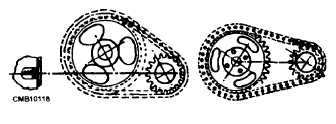
Figure 3-67. - Methods of valve timing with a chain drive.
In a gear drive setup (fig. 3-66), the timing gear on the crankshaft meshes directly with the gear on the camshaft. Timing gears are commonly used on heavy- duty applications due to their dependability; however, they are noisier than a chain or belt drive. Since they are keyed to their respective shafts, they can be replaced if they become worn. With directly driven gears, one gear usually has a mark on two adjacent teeth and the other mark on only one tooth. To time the valve properly, mesh the gears so the two marked teeth of one gear straddle the single marked tooth of the other.
A timing chain and sprockets can also be used to turn the camshaft (fig. 3-66). This is the most common type of gear train. There are two types of timing chains. One is a silent link type that is used in standard and light-duty applications. The other is the roller-link chain, which is used in heavy-duty applications. Like timing gears, the chain sprockets have timing marks. The correct timing may be obtained by hating a certain number of chain-link teeth between the marks or by lining up the marks with a straightedge, as shown in figure 3-67.
In a belt drive gear train, the sprockets on the crankshaft and the camshaft are linked by a continuous neoprene belt (fig. 3-66). The belt has square-shaped internal teeth that mesh with the teeth on the sprockets. The timing belt is reinforced with nylon or fiber glass to give it strength and prevent it from stretching. This drive configuration is limited to overhead camshaft engines.
Most engines with a chain drive and all belt-driven engines use a tensioner. The tensioner pushes against the belt or chain to keep it tight. This serves to keep it from slipping on the sprockets. This provides more precise valve timing and compensates for component wear and stretch. Engines with a belt drive usually use a spring-loaded idler wheel. Engines with a chain drive use a fiber-rubbing block that is either spring loaded or hydraulic.
NOTE Always check the manufacturer's service manual when you are in doubt about the method of timing used for the engine you are overhauling.
ENGINE BEARINGS
Bearings are installed in an engine where there is relative motion between parts. Engine bearings are called sleeve bearings because they are in the shape of a

Figure 3-68. - Typical sleeve-type bearing half.
Continue Reading